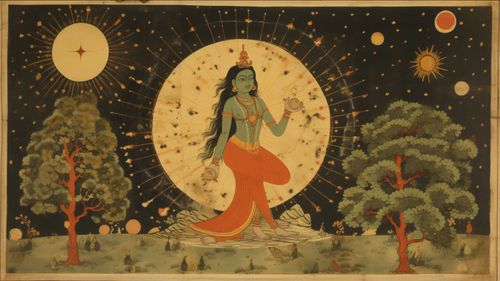'Kadambari' in summary: The Significance & Meaning of India's First Novel
Jan 23, 2024 · 2 mins read
0
Share

"Kadambari", a Sanskrit classic, is co-authored by Banabhatta and his son Bhushanabhatta in the 7th century. It's a unique collaboration across generations, merging two literary styles into one epic tale.
Save
Share
The novel starts with Patralekha narrating her past life as Kadambari, a celestial nymph, to a celestial musician. It sets a mystical tone, delving into themes of love and reincarnation.
Save
Share
Central to the story is Prince Chandrapida, whose life is marked by luxury, education, and destined greatness, reflecting the opulence of ancient Indian royalty.
Save
Share
Chandrapida and Patralekha (Kadambari in her previous life) share a profound love, symbolizing a connection that transcends lifetimes, adding a layer of depth to the narrative.
Save
Share
Another key character, Mahashveta, offers a subplot of unrequited love, showcasing the novel's exploration of complex emotional landscapes.
Save
Share
A curse transforms Chandrapida into a wanderer, leading to adventures filled with mystical elements, showcasing ancient Indian beliefs and spirituality.
Save
Share
The novel is known for its narrative technique of a story within a story and its poetic richness, making it a significant study in ancient Indian literature and storytelling.
Save
Share
"Kadambari" reflects societal norms of its time, including the caste system and the status of women, providing a window into the historical and cultural context of ancient India.
Save
Share
The novel's climax revolves around the lifting of Chandrapida’s curse and the revelation of interconnected fates, weaving a complex tapestry of destiny and relationships.
Save
Share
Beyond its plot, "Kadambari" is a testament to the enduring themes of eternal love and fate, leaving a lasting impact on Indian literature and continuing to resonate with readers today.
Save
Share
0